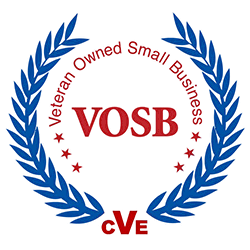A sleek, mixed-use development in Raleigh offers its tenants a concierge service, private Juliet balconies, and common-area foosball tables. Feet on the desk, the developer calls investor after investor with the same pitch on millennials’ taste for toys and luxury. Fast-forward three year and five missed project deadlines, a general contractor looks up from the project plans in his hands to see an eight-story wall leaning at an angle, other walls missing fire protection, and balconies dumping rainwater inside the apartments. On and on the list goes. Because the deadline for completion has long since passed, and the cost of completion is triple the budget, shoddy work gets swept under the rug.
A year after completion, the developer files suit against the general contractor, who in turn sues her subcontractors, including the framing subcontractor. Two years after the framing sub became a party to the suit, he finds documents that show he hired a second-tier sub to construct the balcony that was improperly sloped. He wants to file a claim against the second-tier sub, but the three-year statute of limitations for breach of contract has passed; and, to his defense lawyer’s horror, there is no written contract. This exact scenario plays out in many North Carolina cases every year.
But, never fear, the indemnity cause of action is here! Indemnity allows a party to seek reimbursement for its legal liabilities, and it is available even after the framer has a judgment rendered against him. Here, the framer can assert that even if he is liable to the general contractor and developer for breach of contract, then the second-tier sub is liable for any portion of that liability that arises from the sloped balconies. This scenario is a central issue discussed in the recently issued opinion: Crescent Univ. City Venture, LLC v. AP Atlantic, Inc., 15 CVS 14745, 2019 NCBC LEXIS 46 (N.C. Super. Ct., Aug. 8, 2019).
In Crescent, a framing sub being sued for defective truss installation asserts a third-party claim for indemnity against the truss manufacturer. The contract between these parties did not provide for a framer’s right to seek indemnity from the manufacturer. Under North Carolina law, the right of indemnity may rest on three bases: (1) express contract; (2) a contract implied-in-fact; or (3) equitable indemnity. Kaleel Builders, Inc. v. Ashby, 161 N.C. App. 34, 38 (2003). Equitable indemnity arises from a tort, usually negligence action, when a passively negligent tortfeasor may seek indemnity from an actively negligent tortfeasor for damages owed to a plaintiff. Id. at 41.
In our case, the contract has no indemnity provision in favor of the framer, and therefore indemnity based on express contract will not apply. In addition, equitable indemnity will not apply because tort law generally does not apply to defective contract performance under the “economic loss rule” (note: there are a few exceptions that do not apply here).
Even though the second-tier sub clearly shares some “on the ground responsibility” for the defective work, it remains to be seen whether he is legally liable. The framer is now down to one last claim of indemnity—implied-in-fact. Although there is no written contract, the framer and second-tier sub formed, at the very least, an implied contract because the subcontractor performed work with the understanding she would get paid for her labor. However, the inquiry does not end there.
The court must now examine the relationship between the parties, circumstances of the parties’ conduct, and the creation of an indemnity relationship derivative of the intended agreement. Id. at 38. What does this mean? Attorneys still debate what qualifies as implied-in-fact indemnity, and juries have rather wide discretion in determining whether the indemnity relationship was derivative of the “intended agreement.”
The courts, however, have provided further rules and explanation in the analysis. In Kaleel Builders, the Court of Appeals held no implied-in-fact indemnity existed where the general contractor was not in (1) a master-servant, or “agency-type,” relationship or (2) surety relationship with the subcontractors. Id. at 40. In other words, a general contractor who acts more like a supervisor, manager, and/or boss over its subcontractor will have a better claim for implied-in-fact indemnity. Relying on these rules, the Crescent court held the framer had no right of indemnity from the truss manufacturer because the relationship did not fit the agency-type or surety relationship, and the framer was free to include indemnity as an explicit term in the contract. Crescent University, 2019 NCBC LEXIS 46 at *118. Thus, even if the trusses were defectively manufactured and were the actual cause of the building’s defects, the framer could not hold the manufacturer legally liable.
Turning back to our framer, he may have nowhere to turn for damages related to the sloped balcony. Assuming he did not control the second-tier sub’s work to the level a boss or manager would, he had no agency-type relationship to create an implied-in-fact right to indemnity. The Court recognized indemnity is a valuable right, one that ought to be part of the negotiations as the parties contract. When the framer decided to hire the sub, he could have made indemnity an explicit term of that relationship, allowing the sub to possibly negotiate for higher pay or walk away from the deal.
When supervising and coordinating these large construction projects, parties often fail to appreciate the accompanying risks and liabilities if things go wrong. Parties who delegate work to a subcontractor assume the risk that they may be held liable for errors and omissions of that sub. Of course, all of that risk can be avoided with a signed contract that includes indemnity provisions.
About the Author: Stephen D. Fuller is an associate with Martineau King PLLC and focuses the majority of his practice on the defense of contractors of all tiers in construction defect litigation. Comments and feedback are welcome. Steve can be contacted by email at [email protected].










